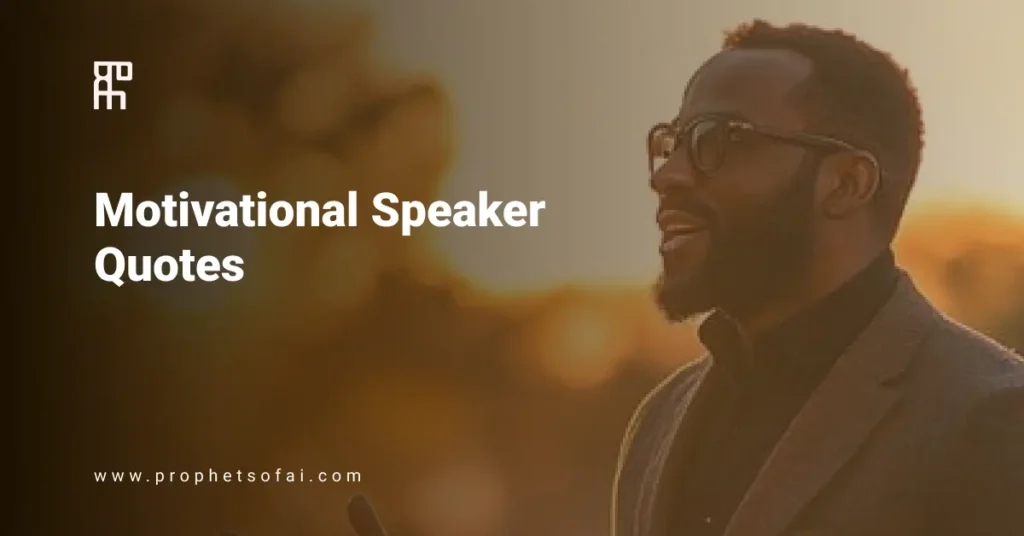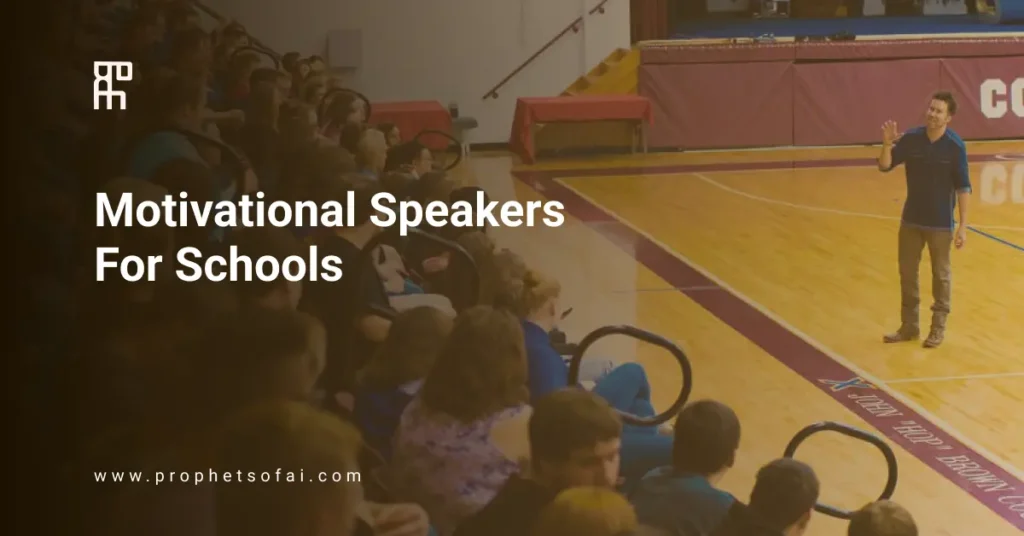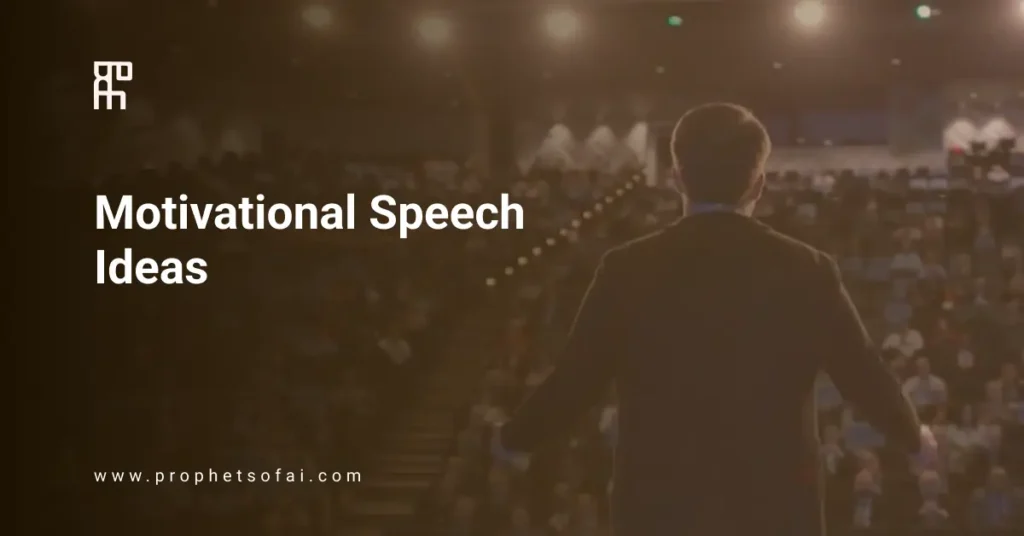You’ve been asked to give a motivational speech. Your heart races—not from excitement, but from panic. What could you possibly say that’s inspiring? Haven’t all the good stories been told? Here’s the truth that most aspiring speakers miss: the power of a motivational speech isn’t in having the most dramatic story or the most polished delivery—it’s in connecting authentically with your audience’s struggles and showing them a path forward. The speeches that change lives aren’t always delivered by professional speakers with celebrity status; they’re often given by everyday people who’ve lived through something meaningful and learned lessons worth sharing. Writing a motivational speech requires more than stringing together inspiring quotes and hoping for the best. It demands strategic structure, genuine vulnerability, and clear action steps that audiences can implement immediately. This guide walks you through the complete process: understanding your audience, crafting your core message, structuring for maximum impact, telling your story compellingly, and preparing for powerful delivery. Let’s begin by exploring proven motivational speech ideas and what makes certain topics resonate universally.
Understanding What Makes a Speech Motivational
Before writing a single word, understand what separates motivational speeches from other presentations.
Core Elements of Motivational Speeches
Emotional connection that moves people: Great motivational speeches make audiences feel something—hope, determination, recognition, possibility. Facts inform; emotions inspire action.
Relatable struggle or challenge: Your audience must see themselves in the problem you’re addressing. When they think “that’s exactly how I feel,” you’ve created the foundation for transformation.
Transformation or breakthrough moment: Show the journey from struggle to resolution. This isn’t about presenting yourself as a hero—it’s about demonstrating that change is possible.
Actionable takeaways audiences can use: Inspiration without direction creates frustration. Give specific steps people can implement immediately, not vague encouragement to “believe in yourself.”
Hope and possibility: The best motivational speeches leave audiences thinking “if they did it, maybe I can too” rather than “they’re special, I’m not.”
What Motivational Speeches Are NOT
Not lectures filled with facts and data alone. Not self-promotional monologues about how great you are. Not generic platitudes without substance. Not manipulation through fear or false promises.
The critical difference: Motivation empowers through authenticity and actionable wisdom. Manipulation exploits through pressure and empty promises. Always empower, never exploit.
Step 1: Know Your Audience Deeply
The biggest mistake speech writers make is starting with themselves instead of their audience.
Who Are They?
Research demographics: age range, professional background, education level. Understand psychographics: values, aspirations, fears, and pain points. Grasp the context: Why are they gathered? What do they expect from this event?
What Do They Need?
Ask critical questions: What keeps them up at night? What challenges are they facing right now? What transformation would most benefit them? What’s their current emotional state—hopeful, frustrated, exhausted, motivated?
How to Research Your Audience
Survey event organizers about attendee composition and concerns. Review audience demographics and previous event feedback. Study similar events they’ve attended. Check social media communities for real conversations about their challenges. When possible, ask directly: “What’s one thing you hope to gain from this speech?”
The Critical Principle
Your speech isn’t about you—it’s about them. Every word, every story, every piece of advice should serve your audience’s needs, not your ego. The moment you prioritize impressing them over helping them, you’ve lost the plot.
For comprehensive preparation strategies, explore our guide on how to prepare a keynote speech.
Step 1: Know Your Audience Deeply
The biggest mistake speech writers make is starting with themselves instead of their audience.
Who Are They?
Research demographics: age range, professional background, education level. Understand psychographics: values, aspirations, fears, and pain points. Grasp the context: Why are they gathered? What do they expect from this event?
What Do They Need?
Ask critical questions: What keeps them up at night? What challenges are they facing right now? What transformation would most benefit them? What’s their current emotional state—hopeful, frustrated, exhausted, motivated?
How to Research Your Audience
Survey event organizers about attendee composition and concerns. Review audience demographics and previous event feedback. Study similar events they’ve attended. Check social media communities for real conversations about their challenges. When possible, ask directly: “What’s one thing you hope to gain from this speech?”
The Critical Principle
Your speech isn’t about you—it’s about them. Every word, every story, every piece of advice should serve your audience’s needs, not your ego. The moment you prioritize impressing them over helping them, you’ve lost the plot.
For comprehensive preparation strategies, explore our guide on how to prepare a keynote speech.
Step 2: Identify Your Core Message
Every powerful motivational speech rallies around one central idea. Not three, not five—one.
The “One Thing” Rule
If your audience remembers nothing else, what single message matters most? Your entire speech should support this ONE central transformation. Multiple messages dilute impact and leave audiences confused about what to do next.
Crafting Your Core Message
Make it specific, not vague. “Embrace failure as feedback” beats generic “Believe in yourself.” Ensure it’s actionable—audiences should understand how to apply it. Test it: Can you state your core message in one clear sentence? If not, you’re not ready to write.
Common Core Message Themes
From fear to courage. From victim to victor. From confusion to clarity. From stuck to moving forward. From disconnected to purposeful. Choose the transformation your specific audience needs most.
The Litmus Test
If you can’t articulate your core message in one sentence before writing, you’ll create a wandering speech that goes nowhere. Get crystal clear on this before proceeding.
Step 3: Structure Your Speech for Maximum Impact
Great content delivered without structure falls flat. Use this proven framework.
Opening Hook (First 60 Seconds)
Grab attention immediately—no throat-clearing or apologies. Use a provocative question, surprising statistic, compelling story opening, bold statement, or personal vulnerability. Never start with long introductions, thanking everyone, or reciting your agenda.
The Setup: Problem/Challenge (10-15%)
Introduce the struggle your audience faces. Make it relatable—they should think “that’s exactly how I feel.” Create tension that demands resolution, but don’t dwell too long. You’re setting up, not wallowing.
Your Story: The Journey (50-60%)
Share your personal experience with the challenge. Show vulnerability—your struggles, failures, and doubts. Include the turning point: What changed? What did you learn? Demonstrate transformation: How are you different now? Be relatable, not impressive. Use sensory details that transport audiences into the moment with you.
The Lesson: Universal Truth (15-20%)
Extract wisdom from your story. Make it universal—how does your experience apply to them? Provide frameworks or principles they can use. Support with research or additional examples if needed.
The Call to Action: What Now? (10-15%)
Give specific, actionable next steps. Make actions simple and immediately doable. Create urgency without pressure. Paint a vision of what’s possible when they act. End with a memorable statement that echoes your core message.
For more insights on successful delivery, check our guide on motivational speech success.
Step 4: Craft a Compelling Personal Story
Stories create emotional connections that statistics never will. Your story is your proof that transformation is possible.
Why Stories Beat Statistics
People remember how you made them feel, not the facts you cited. Your personal story demonstrates that change is real and achievable, not just theoretical.
Choosing the Right Story
Pick a story where you struggled genuinely—not where you were always the hero. The story must directly relate to your core message. You need real resolution or meaningful learning, not just struggle. Be specific: “last Tuesday at 3pm” beats vague “once upon a time.”
Story Structure Elements
Context: Set the scene quickly—where, when, who. Conflict: What was the problem? What was at stake? Crisis: The low point or turning point. Choice: What decision did you make? Consequence: What happened as a result? Change: How are you different now?
Story Mistakes to Avoid
Don’t make yourself the hero with all the answers. Avoid stories that are too long with excessive tangents. Skip vague, generic experiences without specific details. Never share stories where nothing actually changed or was learned.
Learn more about effective storytelling in our guide on the importance of storytelling in business.
Step 5: Make It Actionable
Inspiration without direction creates frustration. Your audience needs to know exactly what to do next.
The Implementation Gap
Great speeches fail when audiences leave motivated but clueless about next steps. Bridge this gap with crystal-clear actions.
Creating Clear Calls to Action
Be specific: “Write down three strengths you’ve demonstrated this week” beats vague “believe in yourself.” Make it immediate—something they can do today or tomorrow, not someday. Keep it simple: one or two clear actions, not ten overwhelming steps. Make it measurable: How will they know they completed it?
Action Examples by Topic
Overcoming fear: “Identify one fear and take one small action toward it this week.” Finding purpose: “Complete this three-question exercise before you sleep tonight.” Building resilience: “When you face a setback this week, pause and ask: What can I learn from this?”
Give them the “what” and the “how,” not just the “why.”
Common Motivational Speech Writing Mistakes
Avoid these pitfalls that undermine even well-intentioned speeches.
Too many messages: Trying to cover everything dilutes impact. Stick to one core idea that drives real transformation.
All inspiration, no substance: Feel-good moments without actionable content leave audiences empty and frustrated.
Making it about you: Your story serves their growth, not your ego. Stay focused on their needs.
Generic platitudes: “Follow your dreams” without specific guidance falls flat and feels hollow.
Ignoring your audience: Writing the speech you want to give instead of the speech they need to hear guarantees disconnect.
Weak opening: The first 60 seconds determine whether they’ll truly listen—don’t waste them on formalities.
No clear structure: Rambling stories without purposeful direction lose audiences quickly.
Forgetting the ending: Your close should be as powerful as your opening, cementing your core message.
Conclusion
Great motivational speeches combine authentic personal story, universal truth, and clear action steps. Start with deep audience understanding, craft one focused message, structure strategically for impact, and write in your genuine voice. Refine ruthlessly, cutting anything that doesn’t serve your core message. Practice thoroughly until delivery feels natural.
Your unique experience gives you something valuable to share. The world needs voices willing to be vulnerable and helpful, not just impressive.
Ready to take your message to bigger stages? Explore speaking opportunities and connect with expert guidance through Prophets of AI.





